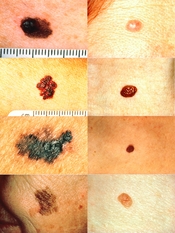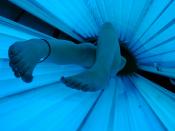Part B: Rough Notes
At least 170,000 cases of skin cancer each year are linked to indoor tanning.
Two common types of non-melanoma skin cancers that are not life-threatening are basal-cell carcinomas and squamous-cell carcinomas.
29% people are most likely to get basal-cell carcinomas than those who have never used tanning beds. (statistics)
People who start tanning before the age of 25 are at a higher risk of getting skin cancer.
Indoor tanning also causes malignant melanoma, the deadliest type of skin cancer.
Ultraviolet radiations from tanning beds provide vitamin D.
Teenagers, especially girls, use tanning beds before their graduation and proms. This is one of the most popular times for teens to hit the tanning salons.
Many teens are not aware of the fact that tanning is harmful for their bodies.
Young teens believe that tanning makes their skin glow. They waste their money on tanning because they take too much importance on their appearance.
These days, teens do not live by the saying ""Beauty comes from within"? Most of them consider that physical attractiveness is bought.
Tanning beds do not make one prettier than the person who does not tan. (expert opinion)
Tanning may be fun, but it can cause damage to the body and even can lead to death.
Tanning beds diffuse ultraviolet radiation that link to multiple skin cancers such as melanoma.
A quarter of youth in Canada, mainly young females, have used tanning beds. (statistic)
Many provinces are banning tanning beds for those under the age of 18.
If teens start tanning at an early age, the damage will be accruing. Some doctors want to limit this situation.
In Canada, parts of British Columbia and Nova Scotia have already banned minors from using tanning beds.
Health Canada states that provinces should set up and enforce...


